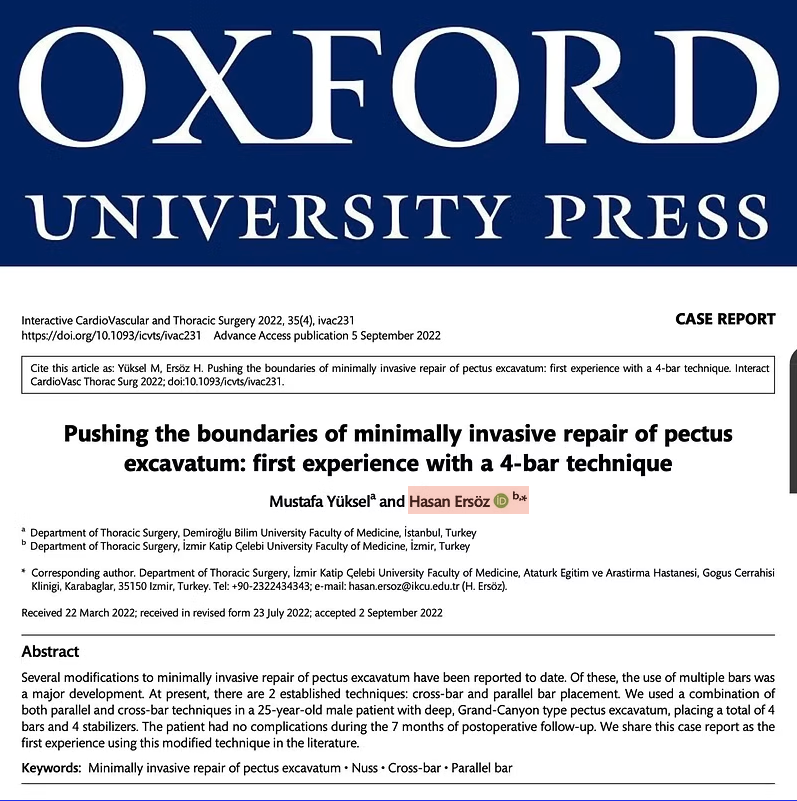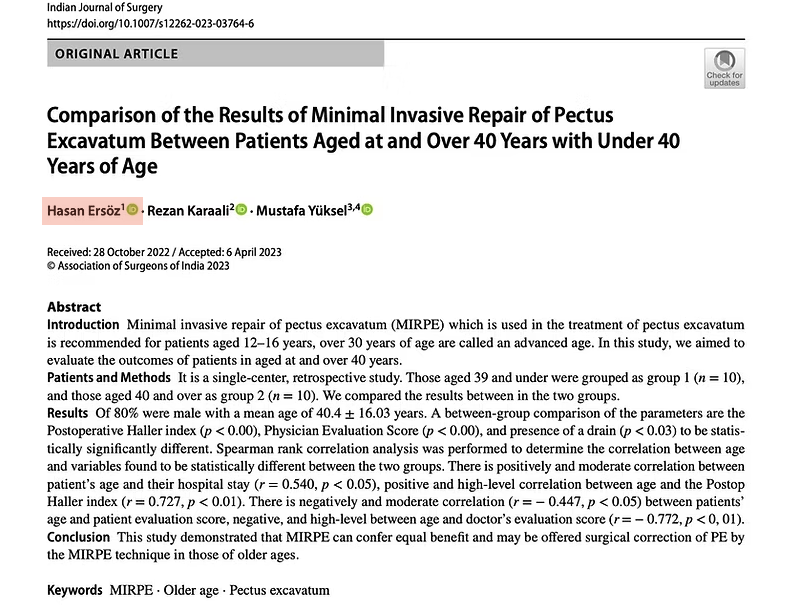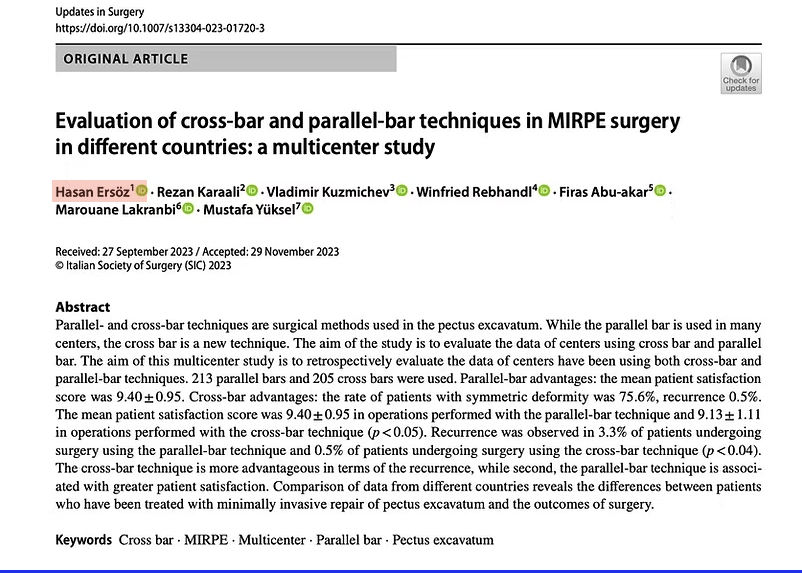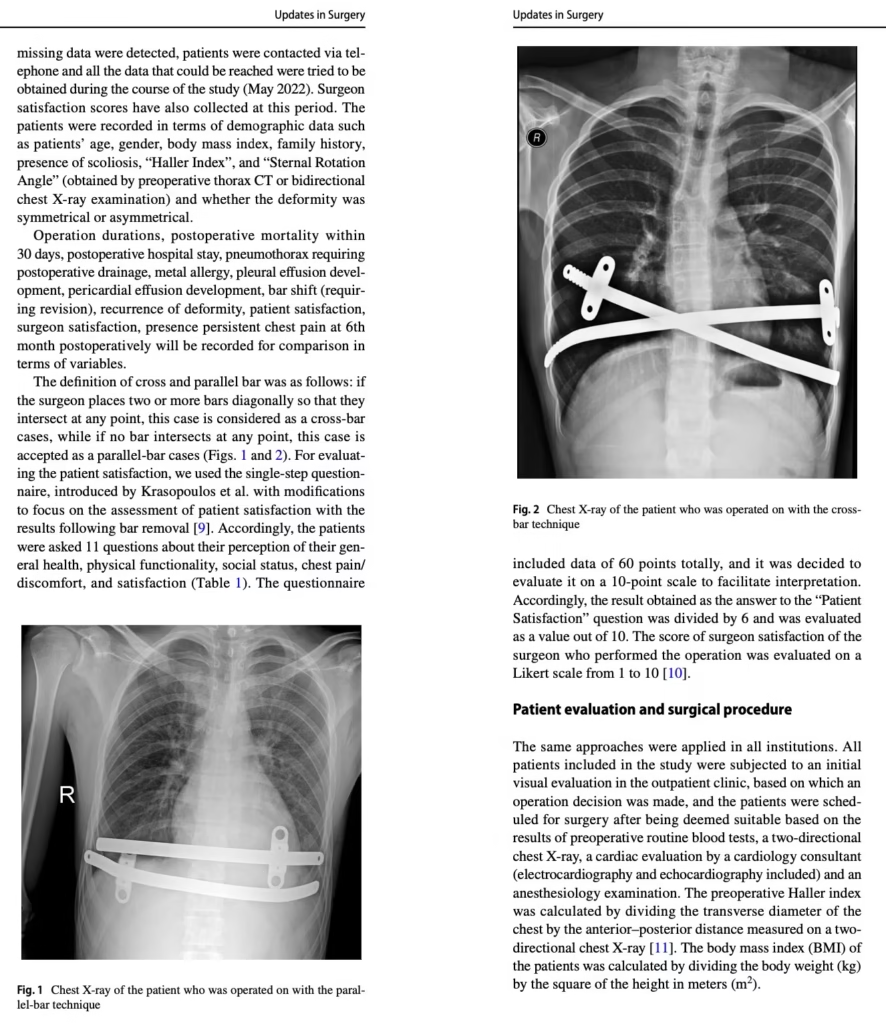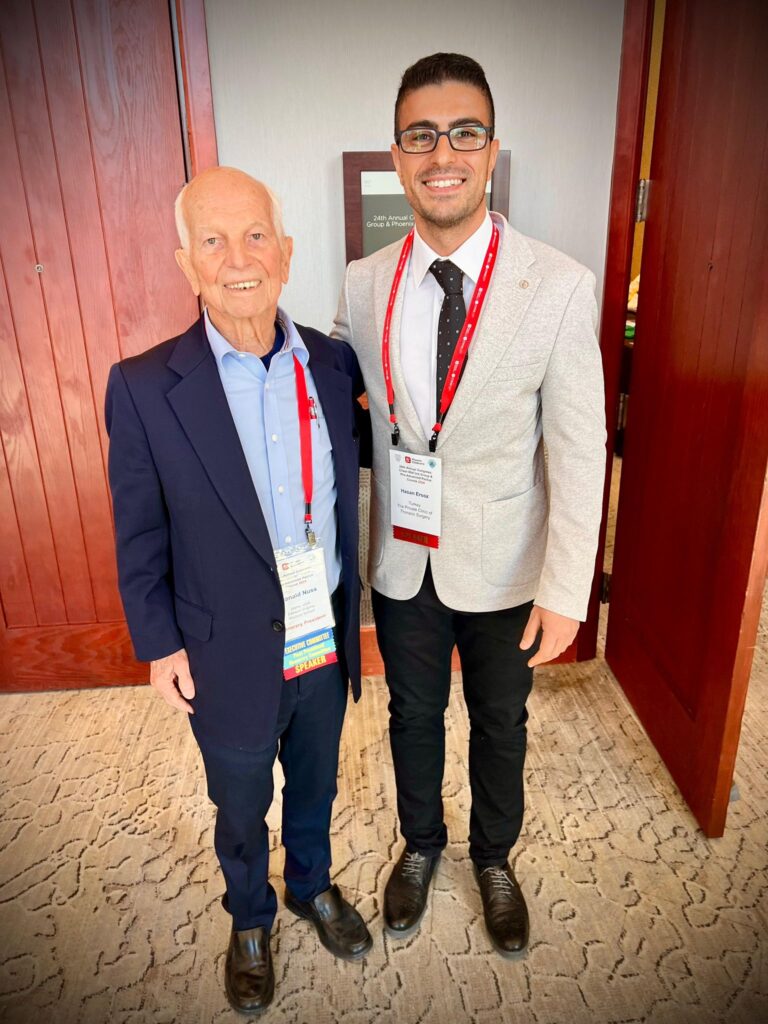MIRPE (Minimally Invasive Repair of Pectus Excavatum) – (Modified) Nuss Procedure
Minimally invasive repair of Pectus Excavatum is a method used for the treatment of pectus excavatum. MIRPE is based on the principle of lifting the sternum by one or more metal rods that enter the rib cage from the points where the patient’s right and left ribs begin to collapse and pass under the deepest point of the sternum bone.
A pediatric surgeon who first described MIRPE, Prof. Dr. Donald Nuss placed this bar with the help of his fingers in young children. Over time, the technique was developed and perfected, and it was named the “Modified Nuss Procedure”. In general, all variations are grouped under the MIRPE heading.
As Dr. Pectus, we can perform this surgery in all spectra, including the Cross bar, which can be applied in only a few clinics in the world, and the 4 bar techniques, which we have described for the first time in the world and have been published in the literature in this way. We have the honor of being one of the clinics that performs this surgery the most in the world with our experience in many cases.
Would you like to see how the pectus deformity looks at the heart from the inside with surgical images?
Attention! The video may contain surgical footage. In this regard, we recommend that it not be watched next to sensitive individuals and children.


